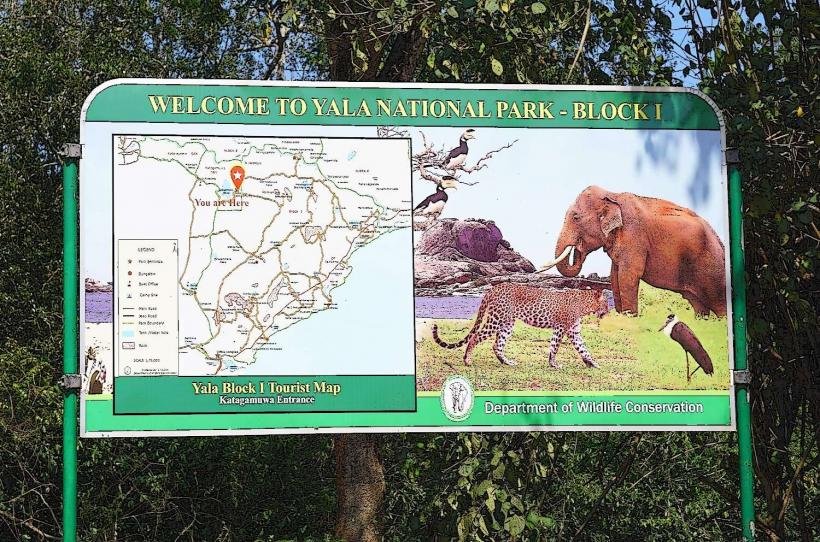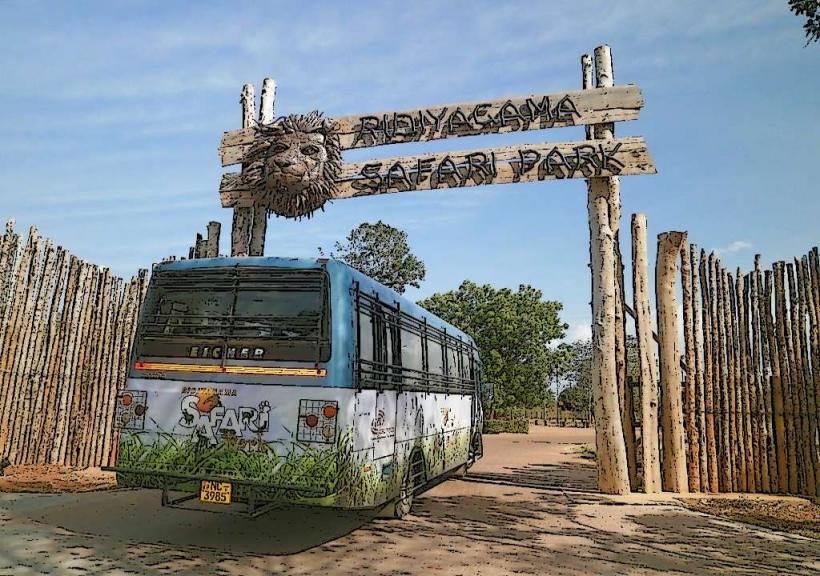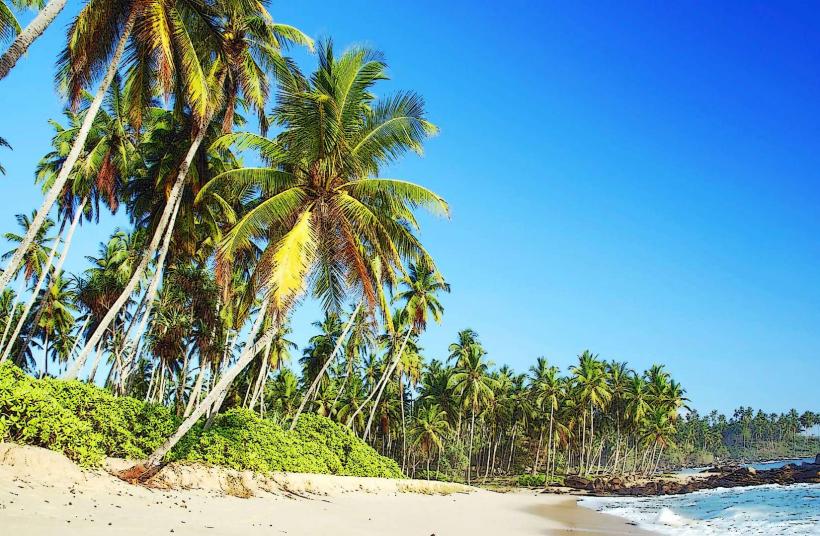Information
Landmark: Bundala National ParkCity: Hambantota
Country: Sri Lanka
Continent: Asia
Bundala National Park is one of Sri Lanka’s most significant and biodiverse national parks, located in the southern part of the island, in the Hambantota District. It is renowned for its mangrove wetlands, saltwater lagoons, and its status as a vital bird sanctuary, attracting both local and migratory species. The park is a UNESCO Ramsar Wetland site and is an essential location for wildlife enthusiasts, nature lovers, and birdwatchers.
1. Overview
- Location: Bundala National Park is situated in the southern coastal region of Sri Lanka, approximately 20 kilometers east of Hambantota, near the town of Tissamaharama.
- Size: The park covers an area of 6,216 hectares (about 15,352 acres), consisting of wetlands, salt flats, sand dunes, and mangrove forests. This diverse landscape supports a wide variety of ecosystems, making it an important ecological area for many species.
- Designation: Bundala was declared a national park in 1993 and is a designated Ramsar site due to its ecological significance as a wetland of international importance. It is also recognized for its role in protecting migratory birds.
2. Features and Biodiversity
Flora
- Mangroves and Wetlands: Bundala National Park is known for its extensive mangrove forests and wetland ecosystems, which provide habitat for numerous species of plants, animals, and migratory birds. The wetlands are a rich source of biodiversity, supporting a variety of aquatic and terrestrial plants.
- Saltwater Vegetation: The park features a variety of saltwater-tolerant plants, such as salicornia and samar grass, which grow in the salt marshes and mudflats.
- Diverse Habitats: The park contains sand dunes, mudflats, and coastal scrub forests, which create a mix of terrestrial, aquatic, and coastal habitats.
Fauna
- Birdlife: Bundala is a renowned birdwatching destination, home to more than 200 species of birds, including several endangered and migratory species. The park is particularly famous for being a vital stopover point for migratory birds along the East Asia-Australasia Flyway.
- Bird Species: Some notable bird species include the Greater Flamingo, Painted Stork, Black-necked Stork, Pied Kingfisher, and a variety of herons, egrets, and waders. It is a popular spot for seeing flamingos, particularly during the migratory season (October to March).
- Migratory Birds: During the northern winter, Bundala sees a significant influx of migratory birds, including waders and shorebirds, which are drawn to the park’s wetlands and mudflats.
- Mammals: The park is home to a variety of mammal species, including the Sri Lankan elephant, spotted deer, wild boar, and smaller mammals like monkeys and mangoose.
- Reptiles and Amphibians: Bundala is also home to a variety of reptiles and amphibians, including crocodiles, monitor lizards, and snakes. The park’s wetlands provide a rich habitat for these species.
- Marine Life: Due to its proximity to the sea, the park supports a variety of marine life, including sea turtles, which occasionally nest on the nearby beaches.
3. Attractions and Activities
Birdwatching
- Primary Attraction: The most popular activity in Bundala National Park is birdwatching. With over 200 species of birds, the park attracts bird enthusiasts from around the world. The best time to visit for birdwatching is during the migratory season from October to March.
- Flamingo Watching: Bundala is one of the best places in Sri Lanka to observe Greater Flamingos, which flock to the park’s lagoons and mudflats during the migratory season.
Wildlife Safaris
- Jeep Safaris: Visitors can explore the park on a jeep safari, which offers the chance to see the park's diverse wildlife, including elephants, crocodiles, and a wide range of bird species. Safaris are typically guided by local naturalists who help spot wildlife and provide information about the park’s ecosystems.
- Animal Sightings: Apart from birds, visitors may also encounter spotted deer, wild boar, elephants, and monkeys, particularly around the park’s water sources. Bundala is known for its high concentration of wild elephants during certain times of the year.
Nature Walks
- Nature walks and hikes are available for those who prefer a more immersive experience in the park’s natural environment. These walks are typically led by experienced guides who can explain the flora, fauna, and ecosystems of Bundala.
Photography
- Bundala is an excellent location for nature photography, particularly for capturing birdlife, landscapes, and wildlife in their natural habitat. The wetlands, mangroves, and salt flats offer striking contrasts in scenery.
4. Best Time to Visit
- Ideal Visiting Season: The best time to visit Bundala National Park is during the migratory season, from October to March, when the birdlife is most abundant. The weather is typically dry and sunny during these months, providing ideal conditions for wildlife watching.
- Off-Season: The monsoon season (from May to September) sees heavy rainfall, and the park can become difficult to access. However, during this time, the park is less crowded, and the lush environment can still offer unique experiences for those seeking solitude.
5. Accommodation and Amenities
- Accommodation Options: There are several guesthouses and eco-lodges near Bundala, particularly in the town of Tissamaharama. Visitors can find a range of accommodation options, from budget to more luxurious stays, all of which offer easy access to the park.
- Dining: There are local restaurants in Tissamaharama that serve traditional Sri Lankan food, including fresh seafood and rice and curry dishes. Some hotels and lodges near the park also offer meal packages for visitors.
6. Access and Transportation
- Getting There: Bundala National Park is easily accessible from Tissamaharama and Hambantota, which are well-connected by road. Visitors can reach the park by car or taxi from these towns.
- Public Transport: While public buses operate to Tissamaharama, private transport is recommended for reaching the park’s entrance, as it offers a more direct and comfortable route.
7. Conclusion
Bundala National Park is a gem for nature lovers, birdwatchers, and wildlife enthusiasts. With its stunning wetlands, rich biodiversity, and role as a crucial habitat for migratory birds, it offers a unique experience in Sri Lanka’s southern region. Whether you’re interested in birdwatching, wildlife safaris, or simply exploring its beautiful landscapes, Bundala provides a peaceful and immersive natural experience. It is an essential destination for anyone seeking to experience the diversity and ecological significance of Sri Lanka's wildlife.




